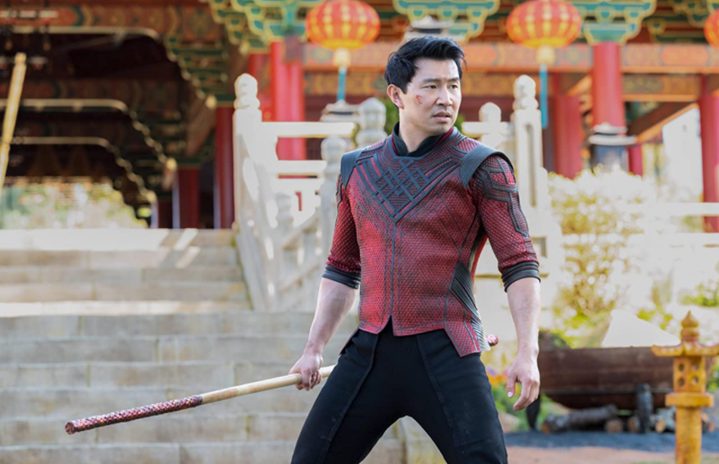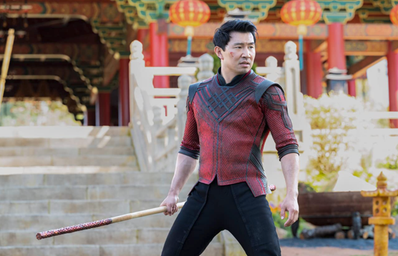Shang-Chi and the Legend of the Ten Rings – which stars Chinese-Canadian actor Simu Liu alongside several other amazing Asian actors – broke the box office when it premiered on August 16, 2021. Centering on the Marvel Cinematic Universe’s first Asian superhero, Shang-Chi tells the story of a Chinese crime leader’s son as he tries to escape his father’s rule until disastrous and mythical circumstances get in the way. At first thought, you’re probably saying, “Of course it broke the box office – it’s Marvel.” I wasn’t expecting it to do as well as it did – the comic has racist and stereotypical origins, and only within the last few years have we seen Asian representation start to succeed in the media – but not only did the film more than succeed commercially, it also avoided tokenizing its characters, leading to a recently announced sequel that is both well-deserved and highly anticipated, in my opinion.
As an Asian American kid growing up in the United States, there was a noticeable lack of representation to look up to in the media I consumed. Where other kids saw themselves in the roles of many white heroes and heroines, I, and other members of my generation, really only had Mulan, Jackie Chan, and Bruce Lee. My classmates were told they could embody heroism like Superman and Spider-Man or take on any one of Barbie’s many occupations. I was expected to be a mathematician, or the smart, quirky sidekick to a white protagonist. It gets old fast.
As a little girl, my identity continued to be shaped year after year by suggestions of being Mulan for Halloween, just because she was Asian. But as an adult watching popular culture and film change, suddenly it wasn’t just about Mulan anymore. It was Fresh Off the Boat. It was Moana and Crazy Rich Asians. Then BTS hit the mainstream. And now, Shang-Chi and The Legend of the Ten Rings and its impending sequel. Watching the landscape of Hollywood change bit by bit, and seeing more Asian representation in popular media, has meant so much to me, my friends and family, and other Asians who have lived in this country for years with little representation, though there’s still a long road ahead of us. A 2021 study from USC found that only 29 of the 1300 films they reviewed from 2007-2019 had an Asian lead or co-lead. A whopping 40 percent of those 1300 films had absolutely no AAPI representation. With so few movies for us to turn to for representation, each new one opens up another door for more opportunities in film for minority groups – if they’re done right.
When I first learned that Marvel would adapt Shang-Chi’s storyline into a live-action movie, I felt conflicted. I was excited for Marvel to take this much-needed step towards representation, but I was also skeptical about their motivation and execution. Were they making this movie because they wanted to share this specific story, or were they riding the wave of faux representation in film – referring specifically to tokenism, where a work features one supporting minority character that is often a caricature – as a way for entertainment industry workers to say their work is “diverse” despite a sea of otherwise white cast members?
In just the first seconds of Shang-Chi, I knew the film was going to achieve what so many others have failed. A Chinese speaker narrating in Mandarin was enough to prove to me that the creative team was going to stay true to the culture; rather than appealing to English-speaking audiences, they put in the extra effort to introduce the film in Mandarin with English subtitles.
The film goes on to introduce Shang-Chi as a Chinese American living in San Francisco. They highlight common tropes that are specific to Asian American families and the struggles of the younger generation in America. For example, Shang-Chi and his best friend, Katy, are criticized for having low-paying valet jobs, despite their families having immigrated from China so their children could be successful in America. Katy’s family also scolds them for neither being married nor dating, illustrating how many Asian families basing the success of their children on their education and career, as well as the judgment that comes based on their significant other – or lack thereof.
They also painted the frustration of having others constantly mispronouncing Asian American names, illustrating a variety of aspects of the typical Asian American experience.
More specifically, they did a fantastic job paying homage to Chinese culture through the inclusion of traditional Chinese martial arts and Chinese mythology. The incorporation of Chinese mythical creatures such as the Shishi (guardian lion dogs), Huli jing (nine-tailed fox), and the Qilin (horse-dragon hybrid) were welcome additions to the Chinese lore relevant throughout the film. Japanese-American director Daniel Destin Cretton emphasizes the film’s Chinese origins, and it’s clear the crew paid attention and did their research on the culture.
Add to this the fantastic performances of A-list, legendary Chinese actors Tony Leung – known for his roles in the films Hero, Flowers of Shanghai, and Happy Together – and Michelle Yeoh – known for her roles in Crazy Rich Asians, Memoirs of a Geisha, and the Crouching Tiger film series – and you have a recipe for success.
Marvel blew my expectations out of the water. They took the time to put together a film that actually speaks to the culture it’s meant to represent, unlike so many that came before it. What could have easily become a white-washed karate action film, like Ghost in the Shell or The Great Wall, proved what’s possible for representation in Hollywood. We’ve finally gotten to a place where Asian characters can be more than the stereotypes that popular media has perpetuated. After years of the MCU, finally introducing an Asian superhero gives not only Asian American kids the representation and pride that they’ve been missing, but also gives non-Asian audience members the chance to see what Asian artists and creators have to offer and that minorities can be so much more than the tokenizations we’re used to.
I’m sure this is felt by every minority that has been marginalized or left on the backburner, pushed into obscurity in order to fit in a primarily white-dominated industry. Going forward, I hope that the success of this film, and others with a diverse cast and crew, inspires other creators and artists to push for more representation not to check off boxes to appear diverse, but to share with the world the cultural knowledge and appreciation that Shang-Chi was able to. As a child, I only had Mulan to look up to. But now, my baby cousins also have Shang-Chi and his sister Xialing, who’s just as strong and smart as her superhero brother. And hopefully, in the near future, they’ll have even more characters to see themselves in.
Studies Referenced:
Yuen, Nancy, et al. (2021) Annenberg Inclusion Initiative. The Prevalence and Portrayal of Asian and Pacific Islanders across 1,300 Popular Films.


